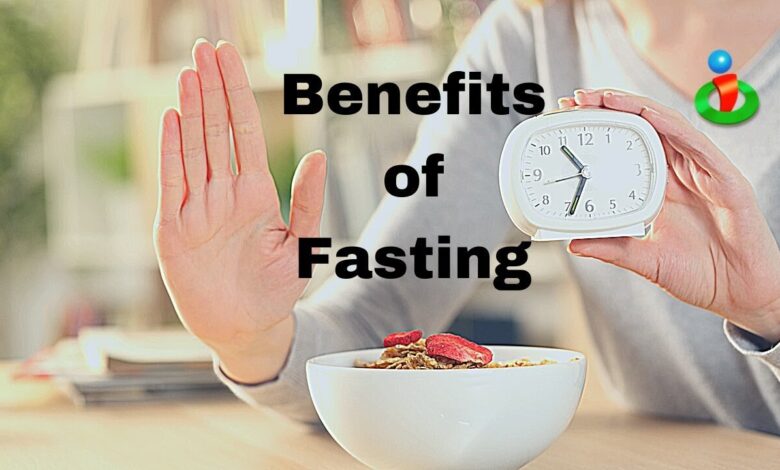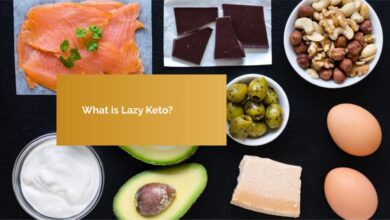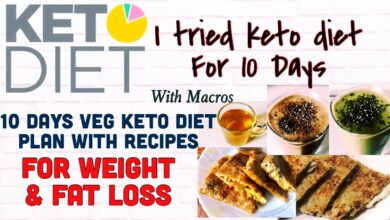
How to Choose the Best Fruits for a Keto Diet: A Guide to Low-Carb Fruits for Intermittent Fasting
Cutting down on carbohydrates often means saying goodbye to sugary treats and high-carb staples. But if you’ve been worrying that going keto or practicing intermittent fasting means sacrificing fruit entirely, think again! While many fruits do pack a sugary punch, there are still several that can fit neatly into your low-carb lifestyle. By choosing fruits wisely, you can enjoy natural sweetness, essential vitamins, and antioxidants without sabotaging your weight loss or wellness goals.
In this comprehensive guide, we’ll delve into the intricacies of picking the best fruits for a keto diet, especially when combined with intermittent fasting (IF). From understanding net carbs to creative ways of incorporating fruits into your meal plan, you’ll learn how to maintain ketosis, keep your cravings in check, and truly thrive in your low-carb journey.
Introduction

Let’s face it: The ketogenic diet is all about slashing carbs to a bare minimum, typically around 20–50 net grams per day. Meanwhile, intermittent fasting extends the period your body goes without food, further encouraging the use of fat as fuel. Together, these approaches can supercharge weight loss and improve metabolic health. But where does fruit fit in?
The key is understanding that not all fruits are created equal. Some are loaded with natural sugars, which can send your carb count soaring. Others are surprisingly low in net carbs, especially if they’re high in fiber or water content. By choosing wisely, you can still enjoy the flavor and health perks of fruit without sacrificing your state of ketosis or fasting gains.
We’ll explore the basic rules of keto, the nuances of combining it with IF, and then we’ll dive into a list of the top low-carb fruits you can relish guilt-free. Let’s get started!
Keto Diet Basics
The ketogenic diet is a low-carb, high-fat eating plan that aims to force your body into ketosis. Typically, keto dieters consume about 70–80% of their calories from fat, 10–20% from protein, and around 5–10% from carbohydrates. This dramatic reduction in carbs allows your body to deplete its glucose stores and begin burning fat for energy.
What Is Ketosis and Why It Matters
When you cut your carb intake dramatically, your body depletes its glucose stores and switches to burning fat, producing ketone bodies in the process. This metabolic state is called ketosis. It can lead to stabilized blood sugar, decreased hunger, and effective fat loss.
Typical Macronutrient Ratios
A standard keto plan often breaks down to about 70–80% of your calories from fat, 10–20% from protein, and 5–10% from carbs. Even small fluctuations in carbohydrate intake can knock you out of ketosis if you’re not careful.
The Importance of Keeping Carbs Low
Any time you eat too many carbs, your body reverts to burning glucose instead of fat. Fruits can be a hidden source of carbs, so you’ll need to be selective to maintain ketosis, especially if you’re also practicing fasting protocols.
Intermittent Fasting Essentials
If you’re combining keto with intermittent fasting, you’re doubling down on fat-burning. IF typically involves extending your usual overnight fast, limiting your eating window to a set number of hours each day.
Fasting Windows and Eating Windows
Popular fasting schedules include the 16:8 (16 hours fasting, 8 hours eating), 20:4, or even alternate-day fasting. During fasting windows, you consume only water, black coffee, or unsweetened tea. Once your eating window opens, you stick to keto-approved foods.
Benefits of Combining Keto with Intermittent Fasting
The synergy between keto and IF can expedite the transition into ketosis, making your metabolism more efficient at burning fat. People often report accelerated weight loss, improved mental clarity, and better energy levels.
Common IF Schedules (16:8, 20:4, etc.)
Choose an IF schedule that aligns with your lifestyle. Many find 16:8 easiest, as they can skip breakfast and eat from, say, 12 PM to 8 PM. During your eating window, managing fruit intake is easier because you’re likely consuming fewer meals.
Why Fruit Can Be Tricky on Keto
Ah, fruit—the sweet, refreshing treat many of us love. So why the big fuss about fruit on keto?
Understanding Sugar Content and Natural Sugars
Fruit contains fructose, a natural sugar. While fructose is less likely to spike insulin the way refined sugar might, it still contributes to your total carb count. On a keto diet with a tight carb limit, it’s easy to exceed your daily allowance if you’re not cautious.
Glycemic Index vs. Glycemic Load
Some fruits have a higher glycemic index (GI), meaning they can cause a quicker spike in blood sugar. Others have a lower GI but might still contain enough sugar to accumulate carbs. Considering the glycemic load (which factors in portion size) is critical for staying in ketosis.
Fiber, Net Carbs, and Blood Sugar
One advantage: Some fruits are loaded with fiber, which doesn’t impact blood glucose the same way digestible carbs do. By focusing on fruits with high fiber and relatively low sugar, you can keep your net carbs in check and avoid blood sugar rollercoasters.
Key Factors for Choosing Keto-Friendly Fruits
So, how do you decide which fruits to keep and which to skip? Let’s outline some essential criteria.
Net Carbs vs. Total Carbs
Always look at net carbs—total carbs minus fiber—to gauge a fruit’s real impact on blood sugar. For instance, a fruit might have 10 grams of total carbs, but if it has 6 grams of fiber, you’re only dealing with 4 net carbs.
Low Glycemic Impact and Insulin Response
Fruits with a low glycemic impact help maintain stable blood sugar, crucial for staying in ketosis. Rapid insulin spikes can hamper fat-burning, so low-GI fruits tend to be better for keto dieters.
High Fiber Content and Satiety
Fiber slows digestion and can make you feel fuller, which is a huge plus during both keto and fasting. By opting for fruits high in fiber, you’re more likely to keep cravings at bay without wrecking your carb count.
Low-Carb vs. High-Carb Fruits
Not all fruits are created equal. Some are basically sugar bombs, while others are surprisingly low in net carbs.
Identifying Keto-Friendly Fruits
Typically, fruits that double as vegetables (like tomatoes and cucumbers) or those in the berry family are safer bets. On the other hand, tropical fruits—think mangoes, pineapples, and bananas—tend to be higher in sugars.
Fruits to Avoid or Limit
While “avoid” might be a strong word, you’ll want to severely limit fruits like bananas, grapes, and dried fruits. These varieties can quickly pack on the carbs without offering much fiber.
Portion Control and Carb Budgeting
Even keto-friendly fruits can pose a problem if you overindulge. Always factor in your daily net carb limit. A small handful of berries might be fine, but a large bowl could throw you off track.
The Criteria for Choosing Keto-Friendly Fruits
Let’s dig deeper into the how-to of analyzing whether a fruit can fit your keto macros.
Net Carb Calculation
Start by identifying total carbs. Subtract fiber to get net carbs. If you’re following a specific carb limit—say 20 grams of net carbs per day—this helps you determine how much of that fruit you can afford.
Fiber Content and Glycemic Load
A fruit high in fiber generally has a lower glycemic load, meaning it causes a gradual rise in blood sugar rather than a sharp spike. This is beneficial for keto, where controlling insulin is crucial for fat-burning.
Monitoring Sugar-to-Fiber Ratio
You might also find it useful to compare sugar vs. fiber in each serving. The more fiber relative to sugar, the better, as it can moderate sugar’s effect on your metabolism.
Top Keto-Friendly Fruits
With the basics out of the way, let’s highlight ten low-carb fruits you can incorporate into your lifestyle.
1. Avocado
Avocados top nearly every keto fruit list. Why? They’re loaded with healthy monounsaturated fats and have minimal net carbs (roughly 2–3 grams per half-avocado). They also boast potassium, essential for electrolyte balance during keto.
2. Olives
A savory fruit, olives contain heart-healthy fats and minimal net carbs. They also offer antioxidants and help reduce inflammation—ideal for anyone combining keto with intermittent fasting.
3. Tomatoes
Often mistaken for veggies, tomatoes are fruits that deliver essential vitamins and a mild carb impact—around 4 grams per medium tomato. Pair them with healthy fats like cheese or olive oil for a satisfying meal.
4. Cucumbers
Composed mostly of water, cucumbers are ultra-low in carbs, making them fantastic for hydration during fasting windows. Slice them for salads or snack on them with a keto-friendly dip.
5. Strawberries
Among berries, strawberries can be relatively low in carbs if eaten in moderation. One cup contains around 8–9 net carbs, so watch your serving size. They’re packed with vitamin C and antioxidants.
6. Raspberries
Raspberries are high in fiber, which reduces their net carb count to about 5–6 per cup. They’re perfect for desserts, smoothies, or simply snacking with a dollop of whipped cream.
7. Blackberries
Similar to raspberries, blackberries come loaded with antioxidants and fiber, making them keto-friendly if portion sizes are controlled. Their deep flavor adds variety to your fruit choices.
8. Bell Peppers
Bell peppers are botanically fruits, not vegetables. They’re full of vitamin C and offer a crunchy, low-carb addition to salads or stir-fries. Green bell peppers tend to have fewer carbs than red or yellow ones.
9. Zucchini
Yes, zucchini is a fruit! It’s an ideal low-carb filler for keto meals. Spiralize it for noodles or cube it for soups and casseroles. Its mild flavor soaks up sauces effectively.
10. Lemons and Limes
While you might not snack on these citrus fruits directly, lemons and limes add zesty flavor without adding many carbs. Use their juice or zest to brighten up your dishes and keep your palate satisfied.
Special Considerations for Intermittent Fasting
Timing Fruit Intake in Fasting Windows
When you’re intermittent fasting, your eating window might be tight. Ensure that any fruit consumption happens during your designated eating window to avoid breaking your fast prematurely.
Using Fruits to Break a Fast
If you choose to break a fast with fruit, stick to keto-friendly options and pair them with a protein or fat source. This approach eases your digestive system back into action without causing a sudden blood sugar spike.
Avoiding Carb Spikes During Eating Windows
Be mindful that even low-carb fruits can add up if you’re not paying attention. Balancing them with fats and proteins can help keep your carbs in check and sustain ketosis.
Portion Control and Net Carb Tracking
Even the best low-carb fruit can derail your progress if you overindulge. Portion control is paramount.
Tools for Calculating Net Carbs
Use smartphone apps or online databases to quickly reference carb counts. Subtract fiber from total carbs to find the net carbs.
Using Food Scales and Apps
A small digital scale can help you measure your fruit portions accurately, ensuring you stay within your daily carb limit. Apps like Cronometer or MyFitnessPal can do the math for you.
Balancing Fruit Portions with Fats and Proteins
Including a moderate amount of fat or protein with your fruit can help flatten the glycemic response, maintain satiety, and keep you in ketosis.
Nutritional Benefits Beyond Low Carbs
Fruits aren’t just about keeping net carbs low. They bring a wealth of other nutritional perks.
Fiber for Digestive Health
Fiber supports healthy digestion, which can be disrupted in some people who switch to keto. High-fiber fruits can help keep you regular and improve gut flora.
Micronutrients and Immune Support
Fruits generally offer vitamins A, C, and various minerals that bolster your immune system—critical for overall health, especially if you’re fasting.
Antioxidants for Cellular Protection
Oxidative stress can hamper weight loss and hamper your health. Antioxidants found in fruits fight off free radicals and promote cellular health.
Recipe Ideas and Meal Planning Tips
Making keto and intermittent fasting sustainable means getting creative. Here are a few suggestions:
Smoothies and Shakes
Blend a small portion of low-carb berries with spinach, keto-friendly protein powder, and almond milk. It’s a quick meal that satisfies sweet cravings without piling on carbs.
Fruit-Based Sauces, Salsas, and Dressings
Try making a low-carb salsa using tomatoes, peppers, and fresh herbs. Or create a tangy dressing with lime juice and olive oil to drizzle over grilled chicken.
Low-Carb Baking and Desserts
Almond flour and coconut flour can replace wheat flour in desserts. Add in raspberries or blackberries for natural sweetness and color.
Common Mistakes to Avoid
Overeating Fruit Sugars
Even keto-friendly fruits can accumulate carbs if you snack mindlessly. Stick to measured servings to maintain your net carb goals.
Ignoring Hidden Carbs in Fruit-Based Products
Dried fruits, jams, or sweetened canned fruits often come loaded with hidden sugars. Always check labels carefully to avoid an unintentional carb overload.
Skipping Vegetables and Other Nutrient Sources
Don’t rely solely on fruit for your vitamin and mineral intake. Veggies, nuts, seeds, and quality proteins also contribute essential nutrients.
read also 5 Low-Calorie Fruits for Fast Weight Loss: The Best Natural Weight Loss Boosters;
Combining Fruit with Healthy Fats and Proteins
Why Pairing Nutrients Matters
Pairing fruit with fat or protein can mitigate the impact of its natural sugars, flattening insulin spikes and keeping you more satisfied.
Sample Fruit-and-Fat Combos
- Berries with sugar-free whipped cream
- Cucumbers (yes, a fruit!) with guacamole
- Tomatoes with olive oil and mozzarella
Creating Balanced Meals During Eating Windows
When you break your fast, consider a meal that includes a small serving of fruit, a protein source (chicken, fish, or eggs), and a healthy fat like avocado or olive oil.
Lifestyle Factors That Enhance Keto and IF
Sleep and Stress Management
Lack of sleep and high stress can elevate cortisol, which can sabotage your keto progress by increasing cravings for sugar or carbs. Aim for 7–9 hours of restful sleep.
Exercise and Muscle Preservation
Combining resistance training or cardio with keto and IF can accelerate fat loss and preserve muscle mass. You’ll also benefit from improved insulin sensitivity.
Staying Hydrated for Optimal Metabolism
On keto, your body tends to flush out water quickly. Drink enough fluids to replace lost electrolytes and prevent keto flu symptoms.
FAQs and Troubleshooting
How to Adjust Fruit Intake If Weight Loss Stalls
If you hit a plateau, reduce fruit portions or try a lower-carb variety. Alternatively, tighten up your overall carb intake in other areas.
Strategies for Social Events and Dining Out
Bring a low-carb dish or fruit-based side. Offer to share your meal plan with friends so they’re aware of your dietary choices.
Tracking Progress and Fine-Tuning Your Plan
Regularly measure your ketone levels, track net carbs, and adjust fruit intake based on your body’s feedback.
Conclusion
Choosing the best fruits for a keto diet doesn’t have to be complicated. By focusing on fruits that are low in net carbs and rich in fiber—like avocados, olives, and berries—you can savor natural sweetness without getting booted out of ketosis. The keys are portion control, balancing macros, and tailoring your fruit choices to your personal carb tolerance. When done right, adding fruit to your keto and intermittent fasting regimen can provide variety, essential nutrients, and a hint of sweetness that keeps you committed for the long haul.
FAQs https://en.wikipedia.org/wiki/FAQ
How many carbs can I have if I’m doing keto and IF?
Most keto IF practitioners aim for 20–50 net carbs a day. The exact number varies based on your metabolism, activity level, and goals. Trial and error with a carb-tracking app can help you find your sweet spot.
Can I eat fruit every day on keto without breaking my fast?
Yes, but in moderation. Enjoying a small portion of keto-friendly fruits during your eating window shouldn’t break your fast. Just be mindful of total net carbs and portion sizes.
Is frozen fruit okay for keto and intermittent fasting?
Absolutely, frozen fruit can be just as nutritious as fresh, provided it has no added sugar or syrups. Check labels and be mindful of portion sizes to keep carbs in check.
What if my net carbs go slightly above 50 grams one day?
A single day of exceeding your carb limit by a small amount isn’t necessarily a catastrophe. You might slip out of ketosis briefly, but you can often recover by tightening your carb intake and adjusting your macros the next day.
Are there other low-carb fruits I should consider?
While we covered the top keto-friendly fruits, you can occasionally try small portions of others like peaches or plums. Always calculate net carbs and see how your body reacts before making them a regular staple in your meal plan.





One Comment